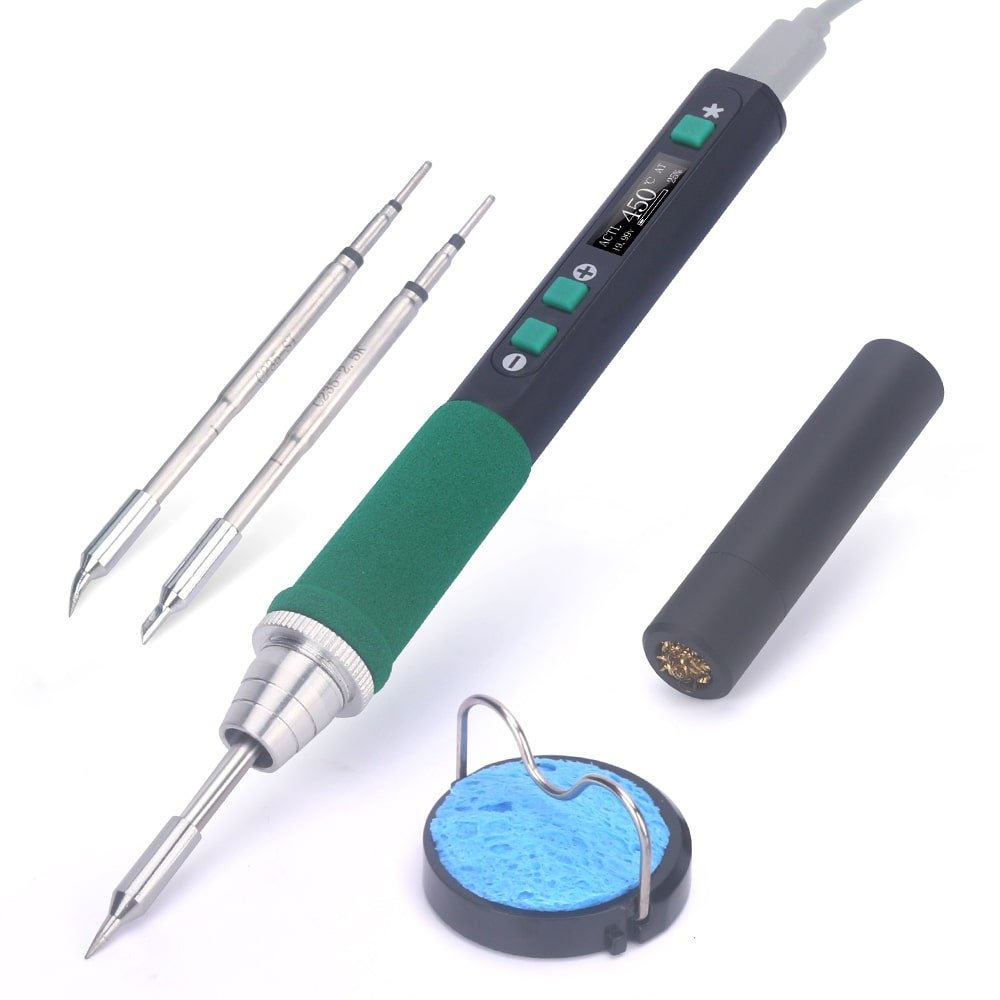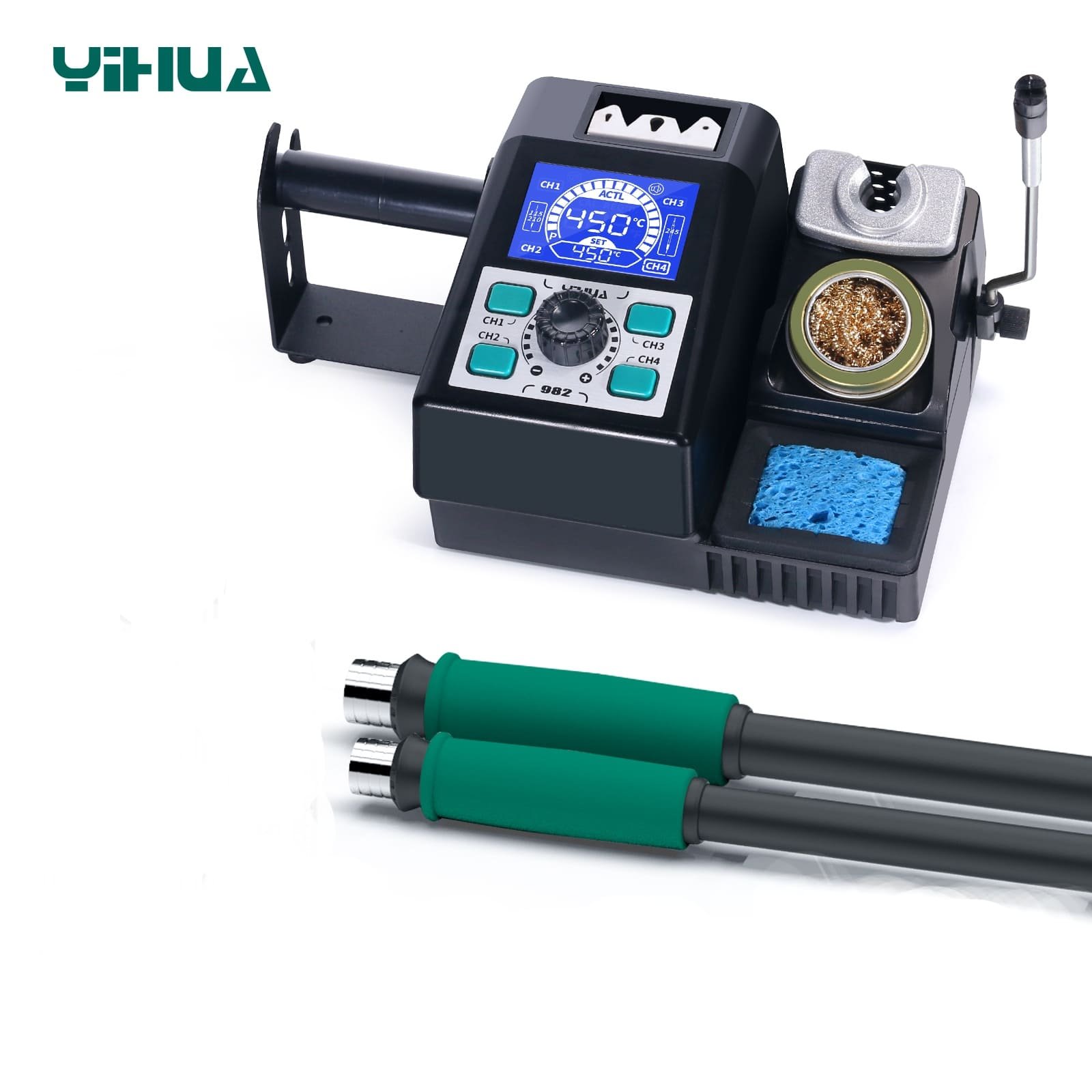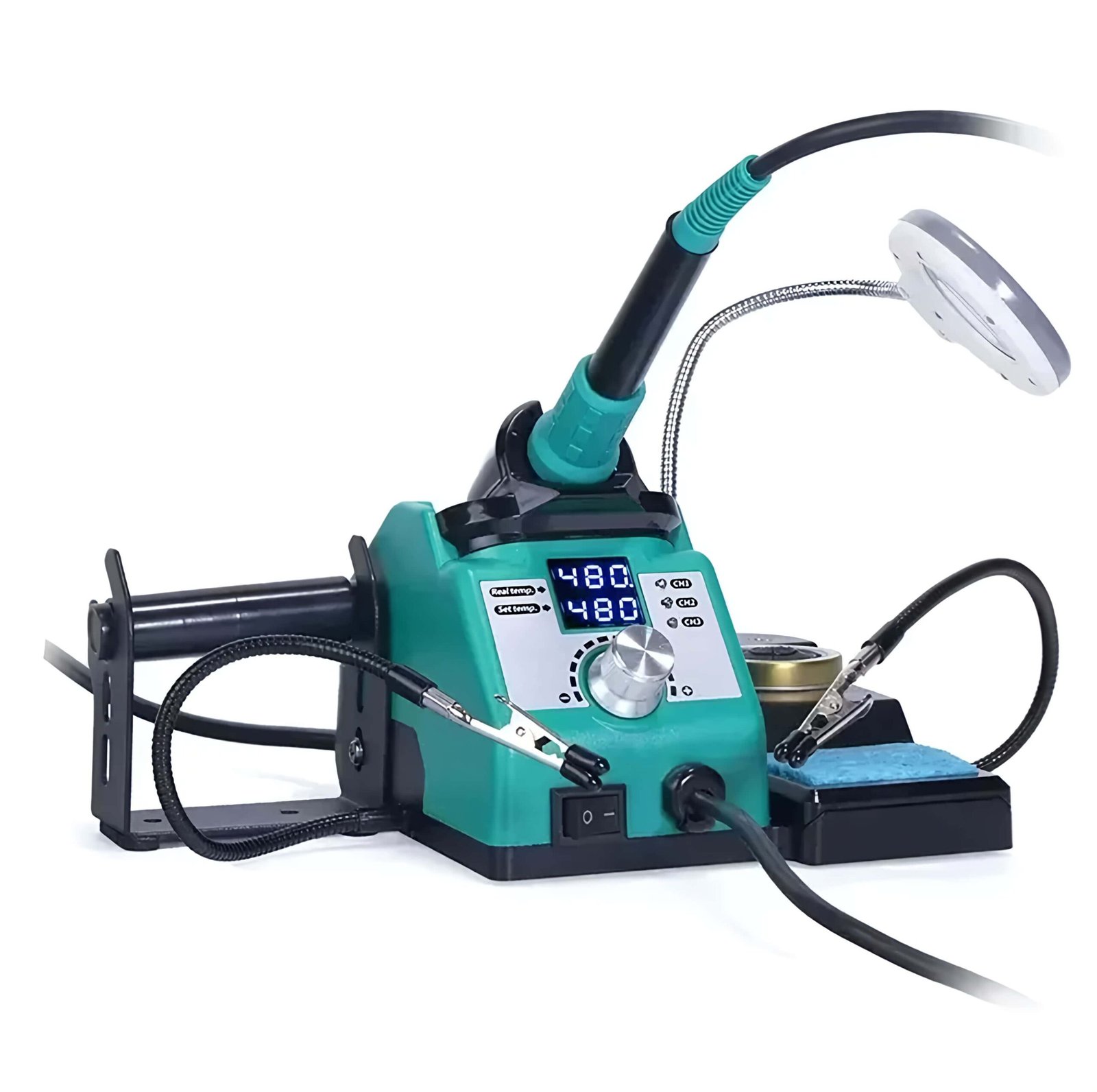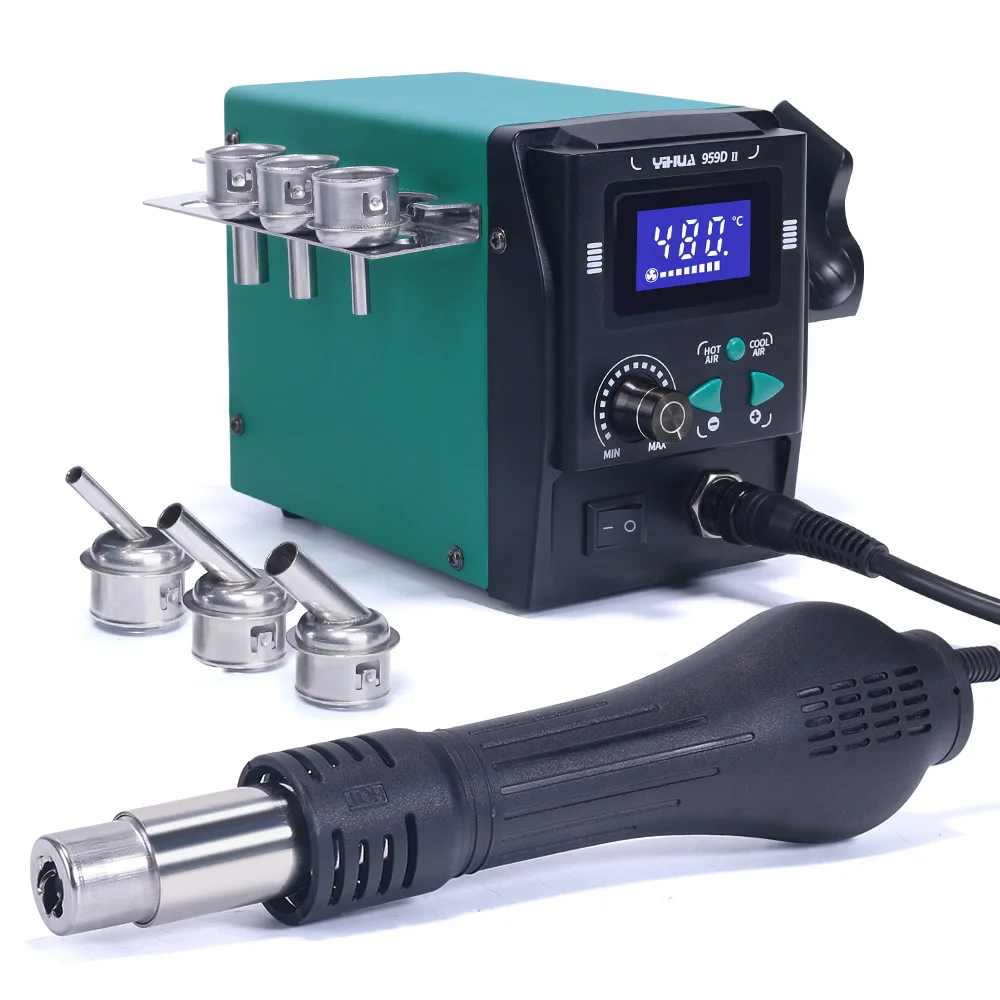At the heart of numerous DIY & Repair tasks, the soldering iron is essential for creating solid and enduring joints between metal pieces. It’s a fundamental tool for anyone keen to explore soldering iron uses or understanding soldering iron functions in their projects. Whether you are mending a broken circuit or crafting exquisite silver jewellery, knowing What Does a Soldering Iron Do? is crucial to achieving professional-standard results.
Integrating the soldering iron into your toolkit opens up a world of possibility, enabling the smooth blending of metals with the application of solder. It demands a mastery of temperature control and an understanding of the metals at hand, alongside strict adherence to safety protocols. In this way, a soldering iron is both a creator’s companion and a critical implement for functional repairs.
Key Takeaways
- A soldering iron is central to the fusion of metals in DIY & Repair scenarios.
- Understanding the functions of a soldering iron aids in achieving durable metallic bonds.
- The effectiveness of a soldering iron lies in temperature control and the type of solder used.
- From intricate jewellery to sturdy plumbing, the tool’s versatility is paramount.
- Adherence to safety measures is non-negotiable for proficient soldering iron use.
Introduction to Soldering Irons
The soldering iron, a pivotal tool in the world of metalworking, construction, and repair, stands as a testament to human ingenuity. Its unique ability to meld two metallic surfaces has made it indispensable in numerous trades and hobbies. The soldering iron has a clear soldering iron purpose: to heat and liquify solder, enabling it to flow between and join pieces of metal, cooling to form a strong, lasting bond.
Defining the Soldering Iron
At its core, the soldering iron is identified by a heated metallic tip designed to reach high temperatures swiftly. This rapid heating allows the solder – typically a fusible metal alloy – to melt and flow into the joint between the workpieces. Once cooled, the joint solidifies, establishing a robust connection, highlighting the soldering iron advantages in achieving durability and electrical conductivity in various applications.
History and Evolution of the Soldering Iron
Tracing the history of the soldering iron, one finds a transformation from rudimentary copper tips heated over coals to sophisticated electric models gracing today’s market. This soldering iron evolution has been fuelled by advancements in both materials science and electronic control systems, reflecting in soldering irons being fine-tuned for a multitude of tasks.
| Epoch | Characteristics | Innovations | Industries Benefitted |
|---|---|---|---|
| Early History | Copper tips, manually heated | Use of combustion for heating | Jewellery, Metalworking |
| Industrial Revolution | Bulkier iron elements, gas-powered | Gas as a portable heat source | Manufacturing, Repair |
| 20th Century | Electrically powered, temperature regulation | Electrical resistive heating | Electronics, Plumbing |
| Modern Day | Digital control, ergonomic design | Microcontroller precision, Environmentally conscious models | Artistry, DIY Projects, Education |
What Does a Soldering Iron Do?
Understanding the soldering iron capabilities is essential for anyone involved in metalwork, and the soldering iron benefits extend well beyond a robust set of functionalities. This versatile tool is integral not only to joining components but also to the process of desoldering, allowing for corrections and recovering valuable materials—a testament to the efficient utility of soldering iron techniques.
At the heart of a soldering iron’s operation is its ability to reach high temperatures, crucial for melting solder to create a seamless bond between metal pieces. While the soldering iron’s primary role might seem straightforward, its full potential is realised through precise temperature control and a range of tip configurations that cater to specific functions and materials. It is this adaptability that underscores its indispensability in both professional trades and leisure pursuits that rely on metal joining.
From small-scale electrical repairs to the artisanal crafting of jewellery, the soldering iron persists as a key player, championing strong and enduring connections amid diverse scenarios. For example, in electronics, the meticulously engineered tip of a soldering iron achieves precise soldering on PCBs, which is fundamental to the functionality of myriad devices. Moreover, the valuable contribution of soldering irons extends to artistic avenues like stained glass creation, where controlled heat application is vital.
- Essential for melting solder to bond metal parts
- Operates at precise high temperatures for targeted application
- Critical for both soldering and desoldering, ensuring material efficiency
- Requires mastery of specialised soldering iron techniques for best results
- Versatility across a wide range of activities accentuates soldering iron benefits
Whether in the repair of a cherished heirloom or the installation of a vital component within an intricate electronic apparatus, the soldering iron emerges as a crucial component of the toolkit. Its ability to foster unyielding bonds while maintaining the integrity of delicate parts is a clear display of its prowess in metal joining endeavours.
In conclusion, a soldering iron performs admirably across various fields due to its inherent capabilities that serve a multitude of projects that require dependable metal joining solutions.
Soldering Iron Uses in Electronics
The intricate sphere of electronics is a realm where the precision and capabilities of a soldering iron are indispensable. Essential for both crafting durable connections and performing delicate electronic circuit repairs, these tools are synonymous with intricate workmanship and reliable functionality in the electronic industry.
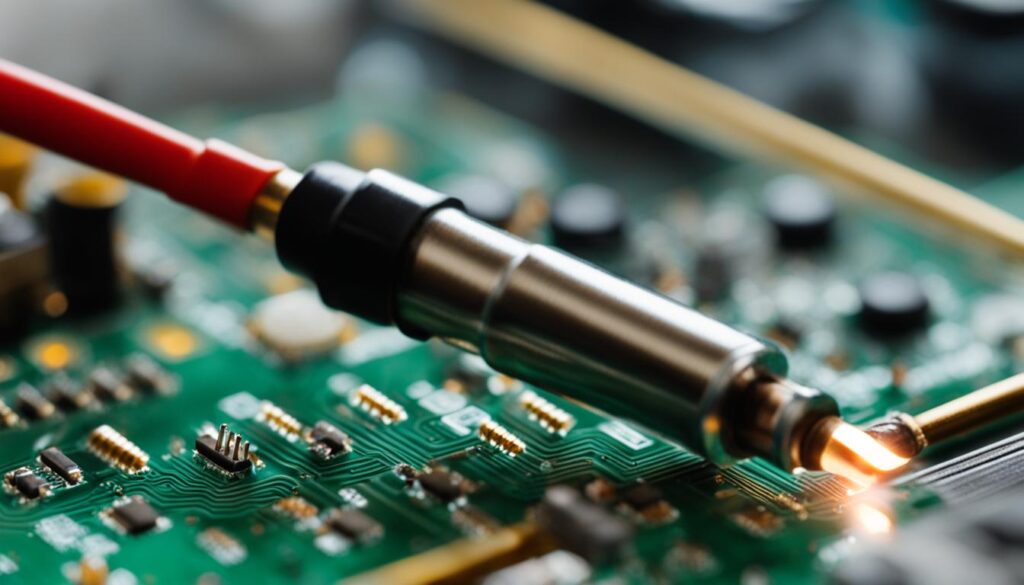
Integral for maintaining and assembling electronic devices, soldering irons enable technicians and hobbyists alike to execute pinpoint accurate soldering tasks. These vary from repairing delicate circuitry to attaching minute, yet critical, components onto circuit boards. The proper use of a soldering iron in this context is not only about adherence to safety protocols but also about precision—an aspect quintessential to the longevity and performance of electronic appliances.
Repairing Circuit Boards
Within the sphere of soldering iron uses in electronics, repairing circuit boards stands out as a task requiring a meticulous approach. It’s the precision of the soldering iron’s tip and the control over its temperature that allows for the restoration of circuitry pathways that are often no broader than a hair. For such intricate jobs, the quality and solidity of each connection directly impact the operation of the electronic device.
Soldering Components to a Board
Similarly, the act of soldering components to a board demands an equally high level of finesse and understanding of precise electrical soldering. Each component must be affixed with enough solder to ensure conductivity, yet not so much as to risk solder bridges which could lead to circuit shorting. This balance is achieved through practice and a deep comprehension of the soldering process, where too little solder might result in a cold joint with poor electrical transmission, and too much could mean a potential malfunction.
Whether for professional electronic circuit repairs or as a pursuit in the field of electronics DIY, the mastery of a soldering iron is a clear marker of one’s dedication to quality and excellence in electrical works. Thus, the soldering iron is more than just a tool; it is a vital extension of the electronic artisan’s craft.
Jewellery Making with a Soldering Iron
The fusion of precious metals using a soldering iron epitomises the convergence of tradition and technology in jewellery making techniques. Renowned for its precision and control, the soldering iron has become an invaluable asset for jewellers dedicated to crafting durable jewellery joints. The utility of the soldering iron in jewellery making derives from its versatile nature, accommodating the intricacies of working with various metals, ensuring the creation of pieces that are not only visually stunning but structurally sound.
One of the primary soldering iron uses in jewellery making is in the delicate process of joining silver and gold components. By manipulating the temperature controls, jewellers have found a way to mitigate the risks of overheating, which can lead to distortion or oxidisation of these valuable materials. A considered application of heat, paired with the correct flux, ensures an immaculate and robust joint, making the soldering iron a go-to tool for artisans.
Adept jewellery artisans leverage soldering iron uses to carefully construct custom-designed pieces that stand the test of time. Integral to this process is a deep understanding of metal properties and the impact that various soldering applications can have on them. Below, we explore the essential considerations that jewellers observe when utilising soldering irons:
- **Choice of Solder**: Selecting a solder that complements the metal being worked on is essential for guaranteeing the integrity of the joint.
- **Flux Application**: Appropriate flux is used to cleanse the metal surfaces, which promotes the clean flow of solder into the joint.
- **Temperature Management**: Careful adjustment of the soldering iron’s temperature to suit the sensitivity of precious metals like gold and silver is paramount.
The marriage of precision tools with skilled craftsmanship renders the jewellery-making process not merely a task, but an art form. By adopting these jewellery making techniques, jewellers can offer bespoke pieces that exude elegance and exhibit extraordinary durability.
| Metal Type | Recommended Solder | Flux Type | Temperature Range |
|---|---|---|---|
| Silver | Medium-flow | Borax-based | 650-710°C |
| Gold | Easy-flow | Paste | 620-700°C |
Through meticulous attention to soldering iron uses, jewellery artisans can continue to innovate, creating incredibly intricate designs that maintain the allure of precious metals. In essence, a soldering iron does more than just join metals; it gives life to the visions of jewellers, enabling them to turn raw materials into cherished heirlooms that can be appreciated for generations to come.
Crafting Stained Glass Art with Precision
The venerable craft of stained glass soldering is a study in precision and patience, where artists harness the meticulous nature of precision soldering iron applications to craft luminous works that catch both the light and the eye. This ancient art, which evokes both historical reverence and contemporary fascination, relies heavily on the nuanced use of the soldering iron to achieve its distinctive look. Updating a historical technique with modern equipment, today’s artisans employ precision-controlled soldering irons to juxtapose vibrant sections of glass with grace and finesse.
At the crossroads of artistry and technique lies the challenge of keeping the glass intact while meticulously soldering lead came lines that bind the colourful panes into a cohesive whole. The key is applying heat with a controlled hand – too much, and the delicate interplay of hues may be overwhelmed by smudging or cracking; too little, and the came may not adhere firmly, leaving the artwork vulnerable to time and elements. The process, therefore, is not just a test of artistic skill but an exercise in scientific precision.
- Assessment of the glass composition and thickness to determine the optimal temperature for soldering without causing thermal stress.
- Choice of a high-quality soldering iron that allows for detailed work along the intricacies of the stained glass patterns.
- Application of flux to clean and prepare the surfaces, ensuring a strong, clean bond between glass and came.
- Technique to distribute heat evenly, preventing warping of the came and ensuring all parts of the glass receive equal attention.
The final measure of stained glass artistry is in the resilience and beauty of the pieces created, serving as both functional windows and stand-alone artistic displays. It is the deft control over the soldering iron by the stained glass artist that animates these kaleidoscopic creations, bringing together the many disparate pieces into a harmonious and durable craft.
Emerging from this dance of colour and metal is a tableau of scenes as diverse as they are delightful; from sunlit chapels to the enthusiast’s home studio, stained glass has a unique ability to uplift and inspire. As long as there are visionaries willing to bend light across the spectrum, there will be precision tools like the soldering iron to bring such visions into vivid reality.
Applying a Soldering Iron in Plumbing Repairs
In the realm of plumbing repair, mastering soldering techniques is a game-changer for achieving watertight seals and performing meticulous pipe repairs. Crafting durable joints between copper pipes stands at the core of plumbing work, demanding precision and a soldering iron capable of delivering unwavering high temperatures. Let’s delve into the high-temperature soldering iron uses and how these tools become integral actors in the plumbing repair process.
Heating and Melting Pipes
When it comes to plumbing, the ability to mould and fuse metallic pipes relies heavily on the deployment of plumbing repair soldering techniques. A high-temperature soldering iron is the plumber’s wand, allowing them to heat the pipes meticulously and melt the solder in order to formulate strong, leak-proof connections. The process is a delicate balance between heat management and timing, ensuring pipes are joined cohesively without compromising their structural integrity.
Choosing the Right Soldering Iron for Plumbing Tasks
Selecting an appropriate soldering iron is pivotal for ensuring plumbing repairs are performed efficiently and effectively. Evaluating the tool’s ability to reach and maintain the necessary elevated temperatures for varying plumbing materials is essential. High-temperature soldering iron uses in plumbing often require a tool robust enough to withstand the rigorous demands of continual heating cycles.
Below outlines key considerations when selecting the ultimate soldering iron for plumbing tasks:
| Feature | Description | Benefit |
|---|---|---|
| Temperature Range | Capability of reaching and sustaining high temperatures | Ensures that the soldering iron can efficiently heat pipes, including those made from harder metals. |
| Tip Quality | Durable tip designed for high heat conductivity | A durable tip ensures longevity and precision during the intensive pipe soldering process. |
| Wattage | Power level of the soldering iron | Higher wattage soldering irons can provide the necessary heat faster, which is ideal for thick pipes. |
| Ergonomic Design | Comfortable and safe to handle for extended periods | Reduces fatigue and the risk of accidents during long plumbing repair tasks. |
The consequence of aligning with the right tool for the job cannot be understated for tradespeople in the plumbing industry. It is the dexterity in the use of these soldering irons that enables plumbers to thrive in their profession, producing seamless, enduring repairs on fixtures that we rely upon daily.
DIY Projects and Repairs Using a Soldering Iron
The do-it-yourself (DIY) enthusiasts are consistently exploring imaginative ways to use a soldering iron, revealing the versatility and significant influence it has in the realm of handcrafted projects and home improvements. From the creation of bespoke lighting solutions to the construction of detailed models, the soldering iron has cemented its role as a crucial instrument for DIY soldering iron projects.
With precision and careful selection of temperature settings, these tools are not limited to mere repairs but have become a gateway for hobbyists to bring their innovative ideas to life. It goes without saying that the successful application of these techniques is underpinned by a solid understanding of the soldering iron’s capabilities and an adherence to best practices in temperature and solder selection.
Creating Custom Lighting Fixtures
The construction of custom lighting fixtures is particularly popular among DIY aficionados, allowing for the expression of individual style and the functionality desired in one’s own living space. Imagine transforming simple materials into an expressive chandelier or an industrial-style desk lamp. The precise application of a soldering iron is essential for attaching metal parts, such as frames and holders, ensuring they adhere flawlessly to create a fixture that is not only visually appealing but also safe and secure.
The Role of a Soldering Iron in Model Building
The meticulous world of model assembly is where the soldering role is exhibited with finesse and detail. Model builders, ranging from railway enthusiasts to war game aficionados, utilise soldering irons to assemble scaled-down versions of locomotives, aircraft, and intricate sceneries. These miniatures often require pinpoint accuracy where the right amount of heat from a soldering iron must be applied to tiny metal components for them to join perfectly without affecting the surrounding detail. The completed model speaks volumes of its maker’s skill, patience, and mastery over the soldering iron.
| Project Type | Materials Used | Temperature Settings | Considerations |
|---|---|---|---|
| Custom Lighting | Copper tubing, Wire frames | Medium to high temp for thick metals | Ensure structural integrity for safety |
| Model Assembly | Brass sheets, Mini components | Low to medium temp for fine detail work | Keep solder flow controlled to avoid excess |
In summary, the iconic soldering iron has emerged as a versatile tool in the DIY community, having a pivotal impact on an array of creative projects. Its ability to fuse metal components with precision makes it indispensable for customisers and repairers alike. Thus, the transformative nature of a soldering iron within the realms of DIY soldering iron projects and model assembly continues to inspire and facilitate the art of creation in countless home workshops across the United Kingdom.
Model Rockets and Their Assembly with a Soldering Iron
For aficionados of model rocketry, a soldering iron emerges as an indispensable artefact in the quest for precision and assembly exactitude. Model rocket soldering, a high-temperature endeavour, demands a robust soldering iron—one equipped to handle the soaring temperatures necessary to construct a solid, launch-worthy rocket. This is not simply about sticking parts together; this is about crafting a vessel capable of defying gravity while withstanding the tumultuous forces of liftoff and the rigours of flight.
Model rocketry, combining aspects of both science and craftsmanship, hinges on the reliable application of heat to secure minute components. Detail-oriented hobbyists rely on soldering iron assembly applications to affix fins and other structural elements that are critical to a rocket’s performance. With each alignment and joint fortified by the appropriate application of a solder, these model rockets are not only a visual delight but also achieve an engineering feat, perfectly balancing the aerodynamic demands with the overall structural integrity of the craft.s
The act of model rocket soldering encapsulates a confluence of passion and technique. The soldering iron becomes more than a tool—it becomes the bridge between an individual’s imaginative vision and the celestial aspirations the rocket embodies. In the minutiae of assembling these payload-bearing vessels, each soldering application is a testament to the hobbyist’s dedication to quality and functionality, preserving in each launch the beautiful symbiosis of artistry and aerospace precision that characterises the world of model rocketry in the United Kingdom.

